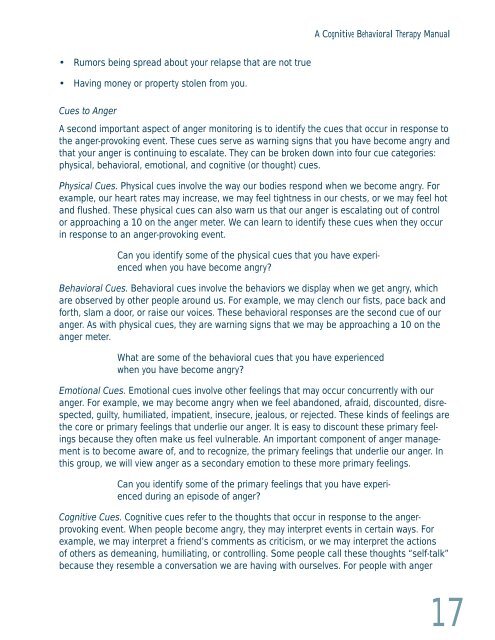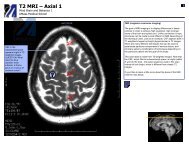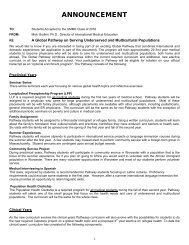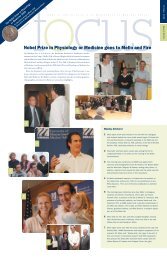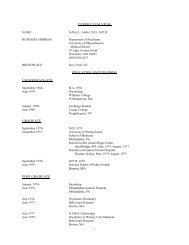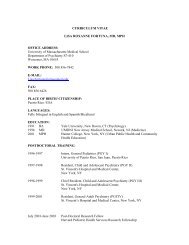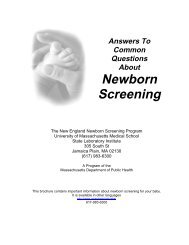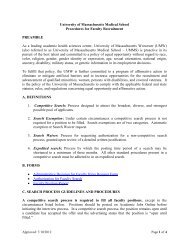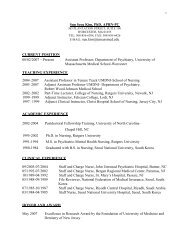Anger Management Manual - the ATTC Network
Anger Management Manual - the ATTC Network
Anger Management Manual - the ATTC Network
Create successful ePaper yourself
Turn your PDF publications into a flip-book with our unique Google optimized e-Paper software.
A Cognitive Behavioral Therapy <strong>Manual</strong><br />
• Rumors being spread about your relapse that are not true<br />
• Having money or property stolen from you.<br />
Cues to <strong>Anger</strong><br />
A second important aspect of anger monitoring is to identify <strong>the</strong> cues that occur in response to<br />
<strong>the</strong> anger-provoking event. These cues serve as warning signs that you have become angry and<br />
that your anger is continuing to escalate. They can be broken down into four cue categories:<br />
physical, behavioral, emotional, and cognitive (or thought) cues.<br />
Physical Cues. Physical cues involve <strong>the</strong> way our bodies respond when we become angry. For<br />
example, our heart rates may increase, we may feel tightness in our chests, or we may feel hot<br />
and flushed. These physical cues can also warn us that our anger is escalating out of control<br />
or approaching a 10 on <strong>the</strong> anger meter. We can learn to identify <strong>the</strong>se cues when <strong>the</strong>y occur<br />
in response to an anger-provoking event.<br />
Can you identify some of <strong>the</strong> physical cues that you have experienced<br />
when you have become angry?<br />
Behavioral Cues. Behavioral cues involve <strong>the</strong> behaviors we display when we get angry, which<br />
are observed by o<strong>the</strong>r people around us. For example, we may clench our fists, pace back and<br />
forth, slam a door, or raise our voices. These behavioral responses are <strong>the</strong> second cue of our<br />
anger. As with physical cues, <strong>the</strong>y are warning signs that we may be approaching a 10 on <strong>the</strong><br />
anger meter.<br />
What are some of <strong>the</strong> behavioral cues that you have experienced<br />
when you have become angry?<br />
Emotional Cues. Emotional cues involve o<strong>the</strong>r feelings that may occur concurrently with our<br />
anger. For example, we may become angry when we feel abandoned, afraid, discounted, disrespected,<br />
guilty, humiliated, impatient, insecure, jealous, or rejected. These kinds of feelings are<br />
<strong>the</strong> core or primary feelings that underlie our anger. It is easy to discount <strong>the</strong>se primary feelings<br />
because <strong>the</strong>y often make us feel vulnerable. An important component of anger management<br />
is to become aware of, and to recognize, <strong>the</strong> primary feelings that underlie our anger. In<br />
this group, we will view anger as a secondary emotion to <strong>the</strong>se more primary feelings.<br />
Can you identify some of <strong>the</strong> primary feelings that you have experienced<br />
during an episode of anger?<br />
Cognitive Cues. Cognitive cues refer to <strong>the</strong> thoughts that occur in response to <strong>the</strong> angerprovoking<br />
event. When people become angry, <strong>the</strong>y may interpret events in certain ways. For<br />
example, we may interpret a friend’s comments as criticism, or we may interpret <strong>the</strong> actions<br />
of o<strong>the</strong>rs as demeaning, humiliating, or controlling. Some people call <strong>the</strong>se thoughts “self-talk”<br />
because <strong>the</strong>y resemble a conversation we are having with ourselves. For people with anger<br />
17


